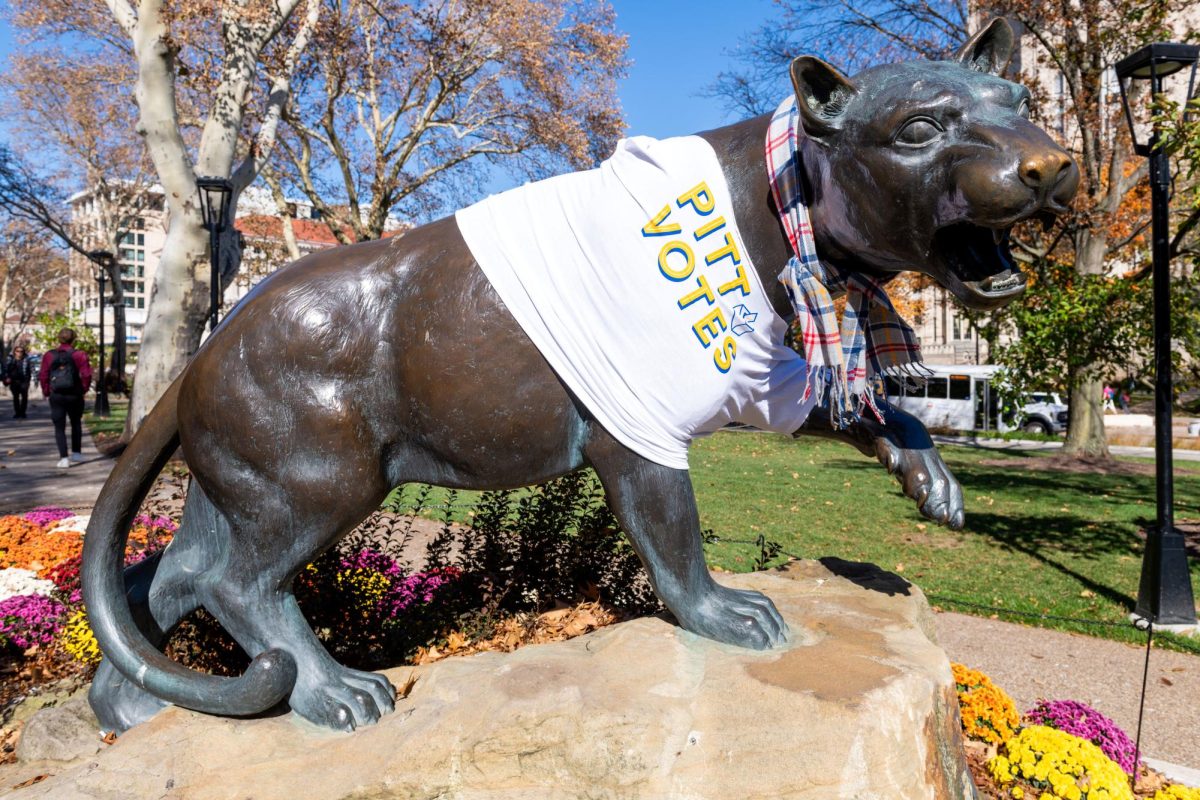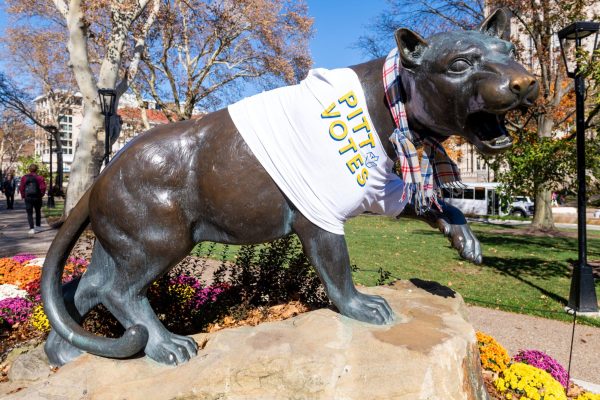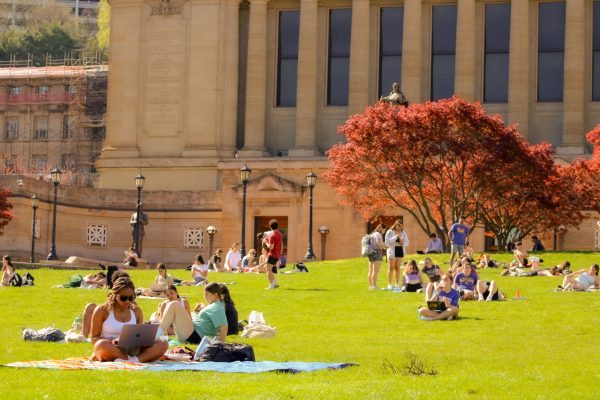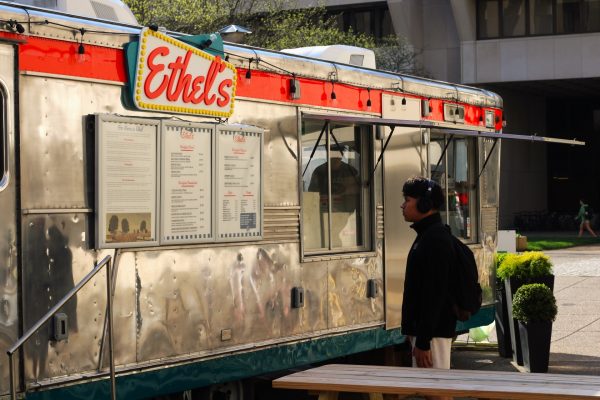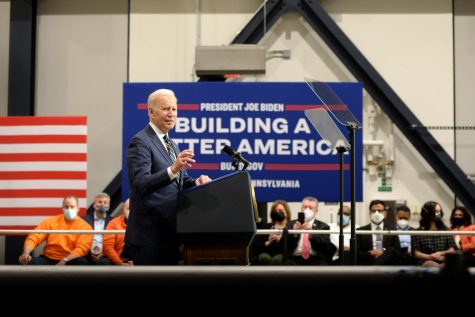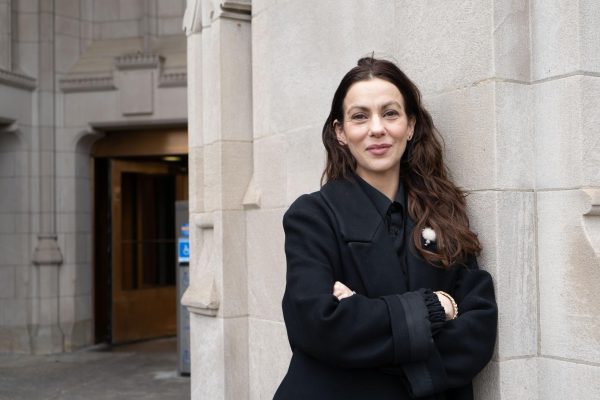‘Organic mixed media’ inspired by Morocco
October 6, 2010
Jill Lena Ford is a Pittsburgh native who is fond of using sand and dirt from Frick Park in her… Jill Lena Ford is a Pittsburgh native who is fond of using sand and dirt from Frick Park in her artwork.
“I call it organic mixed media — I use natural materials that I find in my travels,” she said.
But soon, she will be using organic supplies from a totally different country. On Oct. 5, Ford departed for a two-month trek through Morocco, where she hopes to find inspiration for her next project.
“I have been trying to figure out a way to combine all my passions of art and travel and connecting with people,” she said. ”There’s something about Morocco, I just feel these colors: the blues and greens of the Mediterranean and the reds and oranges of the Sahara.”
The artist explained she was also drawn to Morocco because of all the different cultures she would encounter there.
“It’s in Africa, so you have the African culture, but then it’s right across from Europe, from Spain, so you have this European culture and Middle Eastern [culture],” Ford said.
But this project is different from other ones that Ford has done because she’s financing it with donations from an organization called KickStarter.com, an online program that facilitates funding for artists and creative projects.
“You give people creative rewards in exchange for their pledges,” Ford said. “You only have a certain amount of time to do it — mine’s 30 days — and if you don’t reach your funding goal, you don’t get any of the funds.”
Ford had a unique gift in mind for one benefactor, who pledged enough for a small painting.
“She said, ‘I have some Moroccan heritage in my family,’ so I contacted her and said, ‘if you let me know where in Morocco, I’ll go to that place and get dirt or stones from there and make your painting with it,’” Ford said.
The artist has worked in areas outside of Pittsburgh to create her artwork, so she’s learned how to capture a region in mixed media. Ford’s love of nature and the beauty of the West Coast, where she had lived, helped inspire her work.
“I always painted with vibrant colors and I always had this nature theme,” she said. “I was in California, living in the Redwood Forest in 2000, and I was so overwhelmed with the beauty of the Redwood trees on the coast and I just started painting with it instead of [making paintings] of it.”
It’s taken some practice, but Ford has an understanding of how to make a piece work. The mediums the artist uses depend on the weight and consistency of her ingredients.
“I’ll do canvas and sometimes I’ll do masonite boards if I’m going to do something really heavy with a lot of stones or sand. It really gets heavy and I don’t think a canvas would support it,” Ford said. “It’s been a lot of trial and error. I definitely had some things that didn’t work so well at the beginning, but I’ve been doing it for so long that I kind of just have a feel for things now.”
Pitt Studio Arts professor Delanie Jenkins explained that Ford’s use of organic materials in her art isn’t new to the art world.
“Artists have been using these materials even before there were artists, as a form of expression [because] these were our materials from the beginning of time, whether we called ourselves artists or not,” Jenkins said.
She mentioned that Ford’s style of art is present in pieces on display at the Carnegie Museum. She discussed a painting by Anselm Kiefer that utilizes hay and soil.
“He’s using those materials to address his country, which is Germany, and it’s history and landscape,” Jenkins said.
The professor, who is entering her 15th year at Pitt, has used organic media in her art as well.
“I’ve used organic materials in my work that I’ve actually grown and, for me, in growing and harvesting there’s a sense of time and an investment in time, observation and labor,” she said. “It’s part of the artistic process, a different piece might be about a different process.”
Ford has a different connection to the organic media, as she uses what she finds naturally rather than growing the materials. Yet she experiences the same sense of unity with the earth.
“[All] of these materials are alive in their own way and they just kind of live on in my paintings,” she said. “The same feeling you’d get when you see a flower out in nature or these stones, you still can get in the paintings … Nature is where I find my clarity and my peace, I can just go find answers there.”
Ford believes it’s important for everyone, and artists especially, to immerse themselves in unfamiliar cultures.
“This world is bigger than just ourselves and our community. We really are all connected and we can make a difference in a positive way. You just need to expand your horizons,” she said.
Ford’s project will be exhibited at the Istanbul Grille on Butler Street in Lawrenceville either the last weekend in January or the first weekend in February.


